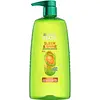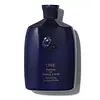What's inside
What's inside
 Key Ingredients
Key Ingredients

 Benefits
Benefits

 Concerns
Concerns

 Ingredients Side-by-side
Ingredients Side-by-side

Water
Skin ConditioningSodium Laureth Sulfate
CleansingCoco-Betaine
CleansingSodium Chloride
MaskingLaureth-5 Carboxylic Acid
CleansingCocamide Mipa
EmulsifyingAmodimethicone
Parfum
MaskingSodium Benzoate
MaskingHexylene Glycol
EmulsifyingPolyquaternium-7
Pyrus Malus Fruit Extract
Skin ConditioningPEG-55 Propylene Glycol Oleate
Propylene Glycol
HumectantSalicylic Acid
MaskingPEG-60 Hydrogenated Castor Oil
EmulsifyingNiacinamide
SmoothingPyridoxine Hcl
Skin ConditioningHexyl Cinnamal
PerfumingCitric Acid
BufferingSaccharum Officinarum Extract
MoisturisingBenzyl Alcohol
PerfumingLinalool
PerfumingAmyl Cinnamal
PerfumingArgania Spinosa Kernel Oil
EmollientHydroxypropyltrimonium Lemon Protein
HumectantTocopherol
AntioxidantPhenoxyethanol
PreservativeCitrus Limon Peel Extract
EmollientLeuconostoc/Radish Root Ferment Filtrate
AntimicrobialCamellia Sinensis Leaf Extract
AntimicrobialCI 19140
Cosmetic ColorantCI 14700
Cosmetic ColorantSodium Hydroxide
BufferingCI 75470
Cosmetic ColorantWater, Sodium Laureth Sulfate, Coco-Betaine, Sodium Chloride, Laureth-5 Carboxylic Acid, Cocamide Mipa, Amodimethicone, Parfum, Sodium Benzoate, Hexylene Glycol, Polyquaternium-7, Pyrus Malus Fruit Extract, PEG-55 Propylene Glycol Oleate, Propylene Glycol, Salicylic Acid, PEG-60 Hydrogenated Castor Oil, Niacinamide, Pyridoxine Hcl, Hexyl Cinnamal, Citric Acid, Saccharum Officinarum Extract, Benzyl Alcohol, Linalool, Amyl Cinnamal, Argania Spinosa Kernel Oil, Hydroxypropyltrimonium Lemon Protein, Tocopherol, Phenoxyethanol, Citrus Limon Peel Extract, Leuconostoc/Radish Root Ferment Filtrate, Camellia Sinensis Leaf Extract, CI 19140, CI 14700, Sodium Hydroxide, CI 75470
Water
Skin ConditioningSodium Lauroyl Methyl Isethionate
CleansingSodium Cocoyl Isethionate
CleansingSodium Lauroyl Sarcosinate
CleansingCocamide Mipa
EmulsifyingDimethicone
EmollientPropanediol
SolventPolyglyceryl-3 Laurate
EmulsifyingParfum
MaskingAcrylates/Beheneth-25 Methacrylate Copolymer
Glycol Distearate
EmollientCoconut Acid
CleansingSodium Lauroamphoacetate
CleansingAmodimethicone
Pentylene Glycol
Skin ConditioningSodium Isethionate
CleansingGuar Hydroxypropyltrimonium Chloride
Skin ConditioningSorbeth-230 Tetraoleate
EmulsifyingCaprylyl Glycol
EmollientDivinyldimethicone/Dimethicone Copolymer
Hydroxyacetophenone
AntioxidantSodium Benzoate
MaskingTrisodium Ethylenediamine Disuccinate
Glycerin
HumectantPolyquaternium-7
Ethylhexylglycerin
Skin ConditioningDisodium EDTA
Decyl Glucoside
CleansingDimethiconol
EmollientPanthenol
Skin ConditioningLaureth-23
CleansingLaureth-4
EmulsifyingBHT
AntioxidantCetrimonium Chloride
AntimicrobialTrideceth-15
EmulsifyingTrideceth-3
EmulsifyingSorbitan Laurate
EmulsifyingSodium Lauroyl Oat Amino Acids
CleansingButylene Glycol
HumectantLauryl Glucoside
CleansingPhenoxyethanol
PreservativeC12-13 Pareth-23
CleansingC12-13 Pareth-3
EmulsifyingPrunus Amygdalus Dulcis Protein
Skin ConditioningSalicylic Acid
MaskingCitrullus Lanatus Seed Oil
EmollientHelianthus Annuus Seed Extract
Skin ConditioningHydrolyzed Jojoba Protein
Skin ConditioningHydrolyzed Rice Protein
Skin ConditioningStearic Acid
CleansingAlcohol
AntimicrobialAcetic Acid
BufferingHydrolyzed Vegetable Protein Pg-Propyl Silanetriol
Skin ConditioningKaempferia Galanga Root Extract
Skin ConditioningLeontopodium Alpinum Extract
Skin ConditioningCinnamidopropyltrimonium Chloride
Tetrasodium EDTA
Potassium Sorbate
PreservativeCitric Acid
BufferingPotassium Benzoate
PreservativeLitchi Chinensis Pericarp Extract
Skin ConditioningMoringa Oleifera Seed Extract
Skin ConditioningDisodium Phosphate
BufferingPotassium Hydroxide
BufferingLimonene
PerfumingHexyl Cinnamal
PerfumingLinalool
PerfumingWater, Sodium Lauroyl Methyl Isethionate, Sodium Cocoyl Isethionate, Sodium Lauroyl Sarcosinate, Cocamide Mipa, Dimethicone, Propanediol, Polyglyceryl-3 Laurate, Parfum, Acrylates/Beheneth-25 Methacrylate Copolymer, Glycol Distearate, Coconut Acid, Sodium Lauroamphoacetate, Amodimethicone, Pentylene Glycol, Sodium Isethionate, Guar Hydroxypropyltrimonium Chloride, Sorbeth-230 Tetraoleate, Caprylyl Glycol, Divinyldimethicone/Dimethicone Copolymer, Hydroxyacetophenone, Sodium Benzoate, Trisodium Ethylenediamine Disuccinate, Glycerin, Polyquaternium-7, Ethylhexylglycerin, Disodium EDTA, Decyl Glucoside, Dimethiconol, Panthenol, Laureth-23, Laureth-4, BHT, Cetrimonium Chloride, Trideceth-15, Trideceth-3, Sorbitan Laurate, Sodium Lauroyl Oat Amino Acids, Butylene Glycol, Lauryl Glucoside, Phenoxyethanol, C12-13 Pareth-23, C12-13 Pareth-3, Prunus Amygdalus Dulcis Protein, Salicylic Acid, Citrullus Lanatus Seed Oil, Helianthus Annuus Seed Extract, Hydrolyzed Jojoba Protein, Hydrolyzed Rice Protein, Stearic Acid, Alcohol, Acetic Acid, Hydrolyzed Vegetable Protein Pg-Propyl Silanetriol, Kaempferia Galanga Root Extract, Leontopodium Alpinum Extract, Cinnamidopropyltrimonium Chloride, Tetrasodium EDTA, Potassium Sorbate, Citric Acid, Potassium Benzoate, Litchi Chinensis Pericarp Extract, Moringa Oleifera Seed Extract, Disodium Phosphate, Potassium Hydroxide, Limonene, Hexyl Cinnamal, Linalool
 Reviews
Reviews

Ingredients Explained
These ingredients are found in both products.
Ingredients higher up in an ingredient list are typically present in a larger amount.
This water-soluble silicone is used for its hydrating and softening properties. It is used to add a silky feel to skincare products and has great benefits for haircare.
In haircare, this ingredient:
- Adds shine
- Protects color
- Offers thermal protection
- Boosts hair strength
- Does not build up as easily
Citric Acid is an alpha hydroxy acid (AHA) naturally found in citrus fruits like oranges, lemons, and limes.
Like other AHAs, citric acid can exfoliate skin by breaking down the bonds that hold dead skin cells together. This helps reveal smoother and brighter skin underneath.
However, this exfoliating effect only happens at high concentrations (20%) which can be hard to find in cosmetic products.
Due to this, citric acid is usually included in small amounts as a pH adjuster. This helps keep products slightly more acidic and compatible with skin's natural pH.
In skincare formulas, citric acid can:
While it can provide some skin benefits, research shows lactic acid and glycolic acid are generally more effective and less irritating exfoliants.
Most citric acid used in skincare today is made by fermenting sugars (usually from molasses). This synthetic version is identical to the natural citrus form but easier to stabilize and use in formulations.
Read more about some other popular AHA's here:
Learn more about Citric AcidWe don't have a description for Cocamide Mipa yet.
Hexyl Cinnamal is a fragrance ingredient with a similar scent to jasmine. It can be naturally found in chamomile essential oil.
This ingredient is a known EU allergen and may sensitize the skin. The EU requires this ingredient to be listed separately on an ingredients list.
Hexyl Cinnamal is not water soluble but is soluble in oils.
Learn more about Hexyl CinnamalLinalool is a fragrance and helps add scent to products. It's derived from common plants such as cinnamon, mint, citrus, and lavender.
Like Limonene, this ingredient oxidizes when exposed to air. Oxidized linalool can cause allergies and skin sensitivity.
This ingredient has a scent that is floral, spicy tropical, and citrus-like.
Learn more about LinaloolParfum is a catch-all term for an ingredient or more that is used to give a scent to products.
Also called "fragrance", this ingredient can be a blend of hundreds of chemicals or plant oils. This means every product with "fragrance" or "parfum" in the ingredients list is a different mixture.
For instance, Habanolide is a proprietary trade name for a specific aroma chemical. When used as a fragrance ingredient in cosmetics, most aroma chemicals fall under the broad labeling category of “FRAGRANCE” or “PARFUM” according to EU and US regulations.
The term 'parfum' or 'fragrance' is not regulated in many countries. In many cases, it is up to the brand to define this term.
For instance, many brands choose to label themselves as "fragrance-free" because they are not using synthetic fragrances. However, their products may still contain ingredients such as essential oils that are considered a fragrance by INCI standards.
One example is Calendula flower extract. Calendula is an essential oil that still imparts a scent or 'fragrance'.
Depending on the blend, the ingredients in the mixture can cause allergies and sensitivities on the skin. Some ingredients that are known EU allergens include linalool and citronellol.
Parfum can also be used to mask or cover an unpleasant scent.
The bottom line is: not all fragrances/parfum/ingredients are created equally. If you are worried about fragrances, we recommend taking a closer look at an ingredient. And of course, we always recommend speaking with a professional.
Learn more about ParfumPhenoxyethanol is a preservative that has germicide, antimicrobial, and aromatic properties. Studies show that phenoxyethanol can prevent microbial growth. By itself, it has a scent that is similar to that of a rose.
It's often used in formulations along with Caprylyl Glycol to preserve the shelf life of products.
Polyquaternium-7 is a light to clear colored liquid. It is commonly found in haircare products for its film-forming and anti-static properties.
According to a manufacturer, it is a non-paraben and specially developed for negatively charged surfactant systems. This makes it a great hairstyle holder and helps to improve wet hair detangling without adding buildup.
Salicylic Acid (also known as beta hydroxy acid or BHA) is a well-known ingredient for treating skin that struggles with acne and clogged pores. It exfoliates both the skin's surface and deep within the pores to help clear out buildup, control oil, and reduce inflammation.
Unlike AHAs (alpha hydroxy acids), salicylic acid is oil-soluble. This allows it to penetrate into pores which makes it especially effective for treating blackheads and preventing future breakouts.
Salicylic acid is also known for its soothing properties. It has a similar structure to aspirin and can calm inflamed or irritated skin, making it a good option for acne-prone skin that is also sensitive.
Concentrations of 0.5-2% are recognized by the U.S. FDA as an over-the-counter topical acne product.
It can cause irritation and/or dryness if one's skin already has a compromised moisture barrier, so it's best to focus on repairing that before introducing this ingredient into your routine.
While salicylic acid does not increase sun sensitivity, it’s still important to wear sunscreen daily to protect your skin.
If you are looking for the ingredient called BHA or Butylated Hydroxyanisole, click here.
Learn more about Salicylic AcidSodium Benzoate is a preservative. It's used in both cosmetic and food products to inhibit the growth of mold and bacteria. It is typically produced synthetically.
Both the US FDA and EU Health Committee have approved the use of sodium benzoate. In the US, levels of 0.1% (of the total product) are allowed.
Sodium benzoate works as a preservative by inhibiting the growth of bacteria inside of cells. It prevents the cell from fermenting a type of sugar using an enzyme called phosphofructokinase.
It is the salt of benzoic acid. Foods containing sodium benzoate include soda, salad dressings, condiments, fruit juices, wines, and snack foods.
Studies for using ascorbic acid and sodium benzoate in cosmetics are lacking, especially in skincare routines with multiple steps.
We always recommend speaking with a professional, such as a dermatologist, if you have any concerns.
Learn more about Sodium BenzoateWater. It's the most common cosmetic ingredient of all. You'll usually see it at the top of ingredient lists, meaning that it makes up the largest part of the product.
So why is it so popular? Water most often acts as a solvent - this means that it helps dissolve other ingredients into the formulation.
You'll also recognize water as that liquid we all need to stay alive. If you see this, drink a glass of water. Stay hydrated!
Learn more about Water